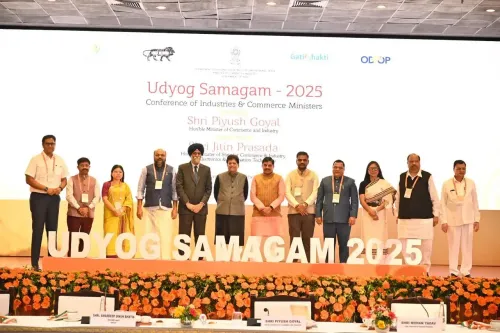Has Mumbai's Real Estate Market Attracted $1.2 Billion in Institutional Inflows in 2025?

Synopsis
Key Takeaways
- Mumbai's real estate has attracted over $1.2 billion in institutional investments in 2025.
- Domestic institutions now account for 48 percent of total inflows.
- Office assets remain the top choice for investors, making up 35 percent of investments.
- Transformative projects are boosting investor confidence in the city.
- Foreign capital represents 67 percent of Mumbai's inflows.
New Delhi, Nov 11 (NationPress) Institutional investments in Mumbai’s real estate sector have surpassed $1.2 billion during the first nine months of 2025, marking the fourth consecutive year the city has exceeded the billion-dollar threshold, according to a report released on Tuesday.
This exceptional performance indicates a robust recovery for Mumbai, bringing it back to investment levels seen prior to the pandemic, as highlighted in the report by real estate services firm Cushman & Wakefield.
On a national scale, institutional investment inflows across private equity and REITs have totaled $4.7 billion year-to-date.
Cushman & Wakefield anticipates that total inflows could reach approximately $6–6.5 billion in 2025, potentially positioning it as the second-best year on record for India’s commercial real estate.
Domestic institutions have gained traction in recent years, now comprising 48 percent of inflows from January to September, while foreign investors accounted for the remaining 52 percent.
This structural evolution has mitigated volatility in cross-border capital movements and fortified the market's stability, the firm noted.
Office properties continue to be the preferred choice for investors, capturing 35 percent of year-to-date inflows, followed by residential at 26 percent, retail at 12 percent, and logistics and industrial at 9 percent.
Despite global uncertainties, institutional capital has found a haven in India’s robust economic fundamentals, strong domestic demand, and trustworthy governance frameworks, stated Somy Thomas, Executive Managing Director of Capital Markets.
Thomas emphasized that the increasing involvement of domestic investors reflects the maturity of the market and confidence in India’s long-term growth narrative.
With transformative initiatives like the Trans Harbour Link and Coastal Road improving connectivity, investor confidence in Mumbai’s long-term prospects remains strong, Thomas added, noting that this momentum is expected to accelerate in the coming months.
Foreign capital constituted 67 percent of Mumbai’s inflows, predominantly from investors in the United States, followed closely by Japan. The residential sector emerged as the main beneficiary, attracting $377 million of the total $797 million in inflows, largely driven by redevelopment projects.









